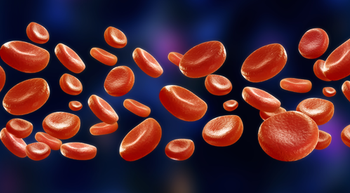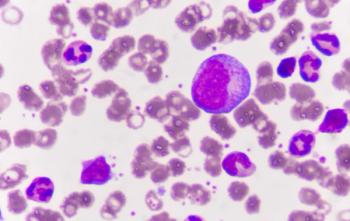
Shared Decisions Enables Comprehensive Pain Assessment to Improve Outcomes
Researchers found that shared decision-making as part of a pain management plan of care could improve outcomes in patients with cancer.
Shared decision-making can help to implement a comprehensive pain assessment at baseline and improve outcomes among patients with cancer, according to study results presented at the ONS 44th Annual Congress.
“Shared decision making can foster earlier identification and improved pain management, where patient preferences, goals, and concerns are discussed,” Jeannine Brant PhD, APRN, AOCN, FAAN, Billings Clinic, said during her presentation. “A study was proposed to determine if incorporating electronic patient reported comprehensive pain assessment and shared decision making into a pain care plan is feasible.”
In one of the first studies to examine shared decision-making as part of the pain management plan of care, 52 patients with metastatic cancer experiencing pain or were taking opioids to manage chronic cancer pain completed a tablet-based survey at enrollment to record baseline pain and activity levels, pain flare severity and length, end of dose pain, and shared decision-making preferences.
In turn, results from the survey were then presented on an electronic dashboard and the healthcare provider and patient collaboratively established a pain care plan. The tailored care plans defined the breakthrough agent for treatment, reinforced the patient taking a long-acting opioid, and provided specific medication instructions, Brant explained. Next, in visits 2 through 4, the healthcare providers tracked symptoms over time to determine if they were making any progress with patient pain.
The effectiveness of shared decision-making on pain outcomes was then measured with the Pain Care Quality Survey. “This really addresses who well we take care of their pain needs as well as involving them in decision making in the pain care plan,” Brant said.
The majority of patients were female (63%) and white (61%), at a mean age of 56 (range, 20-93). Diagnoses included breast (n = 9), hematologic (n = 7), gastrointestinal (n = 7), gynecologic (n = 6), head and neck (n = 6), endocrine (n = 6), thoracic (n = 5), colorectal (n = 3, and other (n = 6).
At baseline, the average pain scores was 6.0 on a scale from zero to 10, which improved to 5.0 at the second visit. In total, 88% reported to have experienced pain flare, with a mean severity of 8.0, of which 74% said their flares last longer than 30 minutes. In addition, 70% reported to experience unexpected pain and 25% had end-of-dose pain. “This helped us get a better picture of what was going on in the population,” Brant said.
Overall, 23 patients (44%) reported a desire for shared decision-making with their provider, while 22 (42%) preferred to make their final decision after they consider their health care provider’s input, and 5 patients (10%) wanted to leave the decision up to their physician.
“Patients were pretty satisfied with the platform and we’ve been doing these for quite some time now,” Brant said.
Reference:
Brant J, Stricker C, Wujcik D, Petok A, Sih-Meynier R, Dudley W. Shared Decision-Making Preferences and Pain Characterization in Patients with Cancer. Presented at: ONS 44th Annual Congress; April 11-14, 2019; Anaheim, CA. Abstract 5029.
Newsletter
Knowledge is power. Don’t miss the most recent breakthroughs in cancer care.

















































































